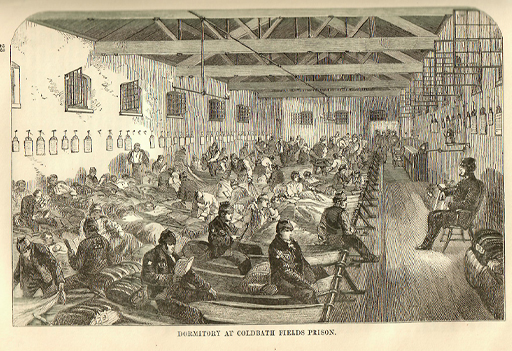2 Reading in seclusion

The imposition of silence and separation in British and Irish prisons from the mid-1830s gave books new importance in the penal regime. Reading the Bible and other religious books was a key component of the reformatory project. Chaplains wanted prisoners to read the Scriptures for themselves.
Reading was also a useful activity to fill long stretches of time when prisoners were not working or sleeping. Idle prisoners were not just an annoyance to officials (who believed that idleness was a cause of crime), but idleness, in the context of extremely limited contact with other humans, was potentially dangerous. It could cause mental health problems – and the authorities were keenly aware of this. Prisoners were subconsciously aware of the dangers too. Faced with soul-destroying boredom, prisoners who could read picked up the books made available to them.
The 1839 Prisons Act for England and Wales specified that all prisoners confined in separate cells should each be provided with a Bible and Common Prayer Book – as part of the standard ‘cell furniture’ – as well as ‘additional books’. Annual and inspection reports from the late 1830s and 1840s suggest that formal libraries were being established at an increasing number of local prisons. At the same time, libraries became commonplace at convict prisons. By the 1850s, libraries could be found on every convict prison hulk (Crone, 2022, ch.3).
